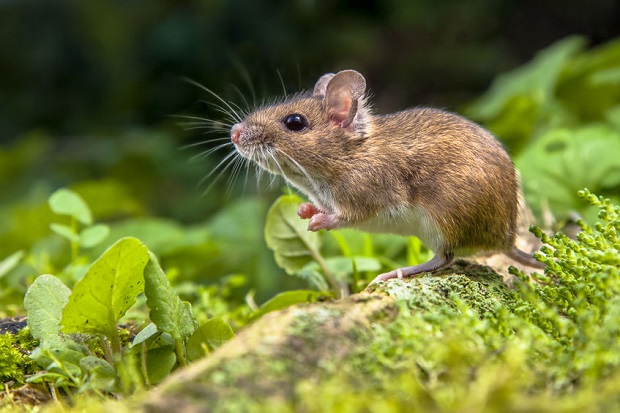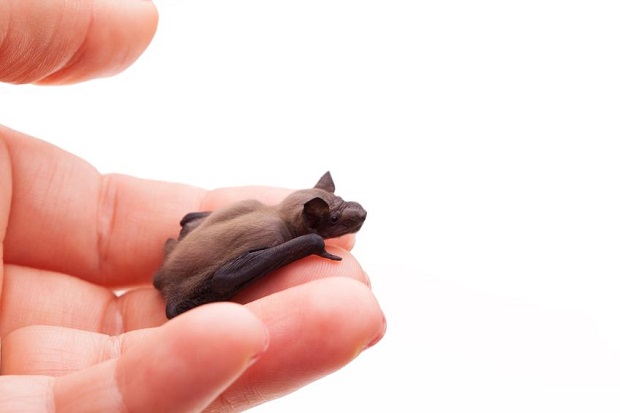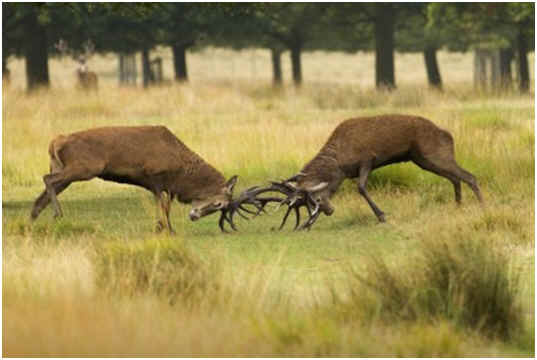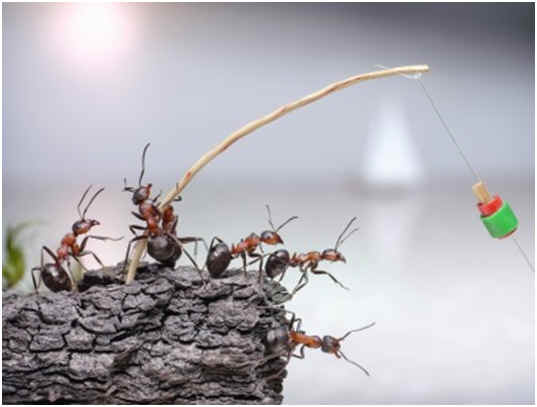
Can ants swim?
Most ants can not swim. Though most ants will float on water and clumsily flail their legs, they are not considered swimmers. Of the 12,000+ ant species, there is one that can swim. Camponotus schmitzi ants regularly dive and swim to forage for food.
Ants Are Poor Swimmers
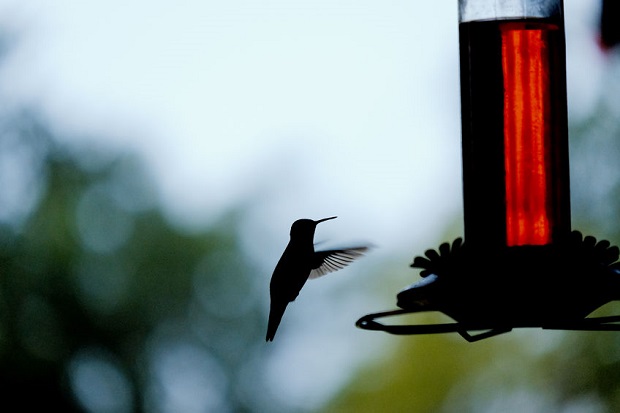
Most ants are poor swimmers, as indicated by the many ant deterrent systems that take advantage of this fact. For example, many hummingbird feeders are designed with saucer-type ‘ant moats,’ which separate a ring of freshwater from the sugar water intended for the hummingbirds. Ants will not cross the water moat to get to the sugar water.
Ants Are Resourceful in Water
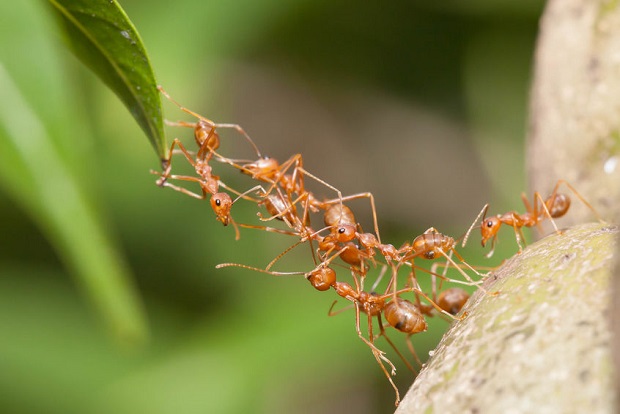
Ants may not be proficient swimmers, but that doesn’t mean that they can’t survive in water. Ants are hydrophobic, allowing them to repel water and float, but their legs are poorly suited for any water movement. The fire ant has a unique method of surviving on water. In times of floods, fire ants will band together as a colony joining legs to form a ‘raft.’ When banded together, the hydrophobic properties increase, allowing them to become even more buoyant. If the fire ant raft is submerged underwater, it will quickly float to the surface. This unique feat of nature allows the ants to live for months while floating to find a new home. [Bush, 62]
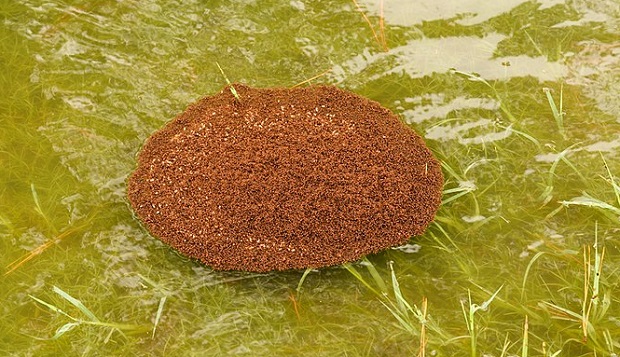
Photo: Brant Kelly | Creative Commons
Red fire ants have created a raft by placing the brood on the bottom for the base and then linking together to float. The queen is protected in the center.
The Amazing Diving Ant
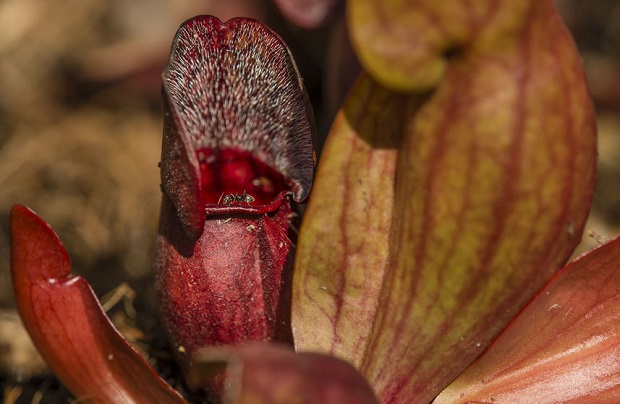
Unlike most ants, the Camponotus schmitzi ants regularly dive and swim to forage for food. The ants live in symbiosis with the pitcher plant and regularly seek food in the plant’s digestive juices. The pitcher plant has unique pitcher-like leaves with hoods that secrete nectar to attract insects. The insects become trapped in the plant and fall into the digestive juices, where they drown and are absorbed by the plant. The ants can dive through the digestive juices to find arthropods that have been trapped by the plant. [Bohn, 2012]
Resources
The Cornell Lab of Ornithology – Cornell University
“Dealing with Predators and Pests in Your Yard.” www.birds.cornell.edu/Page.aspx?pid=1185
Bush, John W. M., and David L. Hu. “Walking on water.” Physics Today 63.6 (2010): 62-63. ©2010 American Institute of Physics
Bohn, HF, and et al. “Ants swimming in pitcher plants: kinematics of aquatic and terrestrial locomotion in Camponotus schmitzi..” National J Comp Physiol A Neuroethol Sens Neural Behav Physiol. 2012. Vol. 198, No. 6, pp: 465-476

